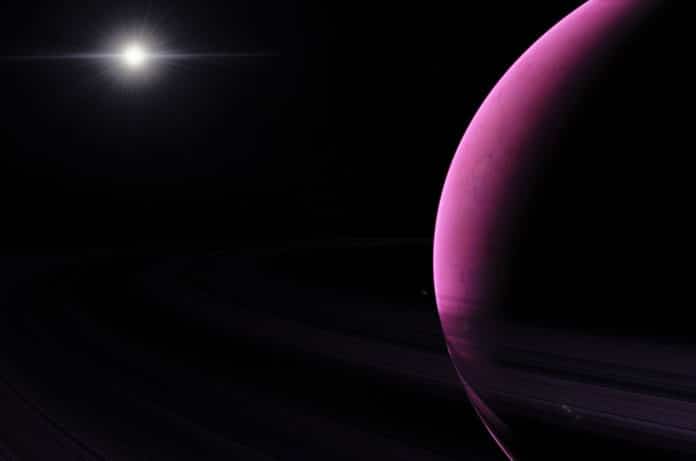Using observations performed by the SAINT-EX observatory in Mexico, an international research team led by the University of Bern has discovered a sub-Neptune exoplanet orbiting a red dwarf star.
Red dwarfs are small stars and much cooler than our Sun. Planets around these stars may hold liquid water. The planet’s proximity to these stars is a crucial factor in its detection: the closer a planet is to its host star, the higher the probability that it can be detected.
The research team discovered the exoplanet TOI-2257 b orbiting a nearby red dwarf in a new study.
One way to detect such exoplanets is the transit method, which includes looking for dips in the star’s brightness when planets pass in front of the star. Repeated observations of the dips in the star’s brightness give precise measurements of the planet’s orbital period around the star.
The depth of the transit method allowed scientists to determine the planet’s diameter. The planet density can be calculated when combined with planet mass estimates from other methods, such as using radial velocity measurements.
The exoplanet TOI-2257 b was originally observed using NASA’s TESS space telescope. Astronomers observed the star for four months.
But there were gaps between observations that indicated that it was unclear whether the decrease in brightness could be explained by the transit of a planet with an orbit of 176, 88, 59, 44, or 35 days.
Observations made by the Las Cumbres Observatory Global Telescope suggest that a planet with a 59-day orbital period was causing the drop in brightness.
Nicole Schanche, a member of the National Center of Competence in Research PlanetS, said, “Next, we wanted to find out if the 35-day orbital period could be possible.”
The Mexico-based SAINT-EX telescope observed a partial transit of TOI-2257 b and was able to confirm the exoplanet’s exact orbital period around its star, 35 days.
Co-author Robert Wells from the CSH said, “Another 35 days later, SAINT-EX was able to observe the entire transit, which gave us even more information about the properties of the system.”
The planet TOI-2257 b has a 35-day orbital period. It orbits the host star where liquid water is possible on the planet. The radius of TOI-2257 b (2.2 times larger than Earth’s) suggests that the planet is rather gaseous, with high atmospheric pressure not conducive to life.
Nicole Schanche said, “We found that TOI-2257 b does not have a circular, concentric orbit. It is the most eccentric planet orbiting a cool star ever discovered.”
“In terms of potential habitability, this is bad news. While the planet’s average temperature is comfortable, it varies from -80°C to about 100°C depending on where in its orbit the planet is, far from or close to the star.”
A possible explanation for this surprising orbit is that a giant planet is lurking further out in the system and disturbing the orbit of TOI 2257 b.
Journal Reference:
- Nicole Schanche et al., TOI-2257 b: A highly eccentric long-period sub-Neptune transiting a nearby M dwarf, Astronomy & Astrophysics. DOI: 10.1051/0004-6361/202142280
